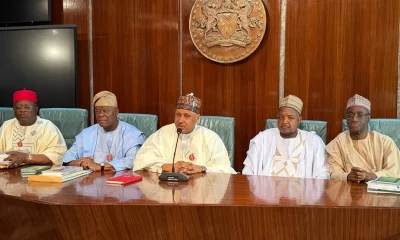The Nigerian naira experienced a minor dip against the U.S. dollar at the weekend, slipping 0.12 percent to reach N1,730 per dollar in the parallel market, a N2 decline from its previous level of N1,728.
This marks a second consecutive day of depreciation following a short-lived rally earlier in the week. The parallel market continues to display significant volatility as the naira remains under pressure amid fluctuating forex demand and economic challenges.
In the official Investors and Exporters (I&E) window, the naira showed resilience, reversing a three-day depreciation streak and closing at N1,601.20 per dollar—a notable 3.30 per cent improvement from N1,654.09 on October 24.
Since mid-October, the currency has hovered above the N1,600 threshold in this market, as Central Bank of Nigeria (CBN) interventions work to balance supply and demand.
The widening discrepancy between the parallel and official rates, now at N128.80, underscores the significant demand for U.S. dollars, even as the CBN attempts to manage exchange rate stability.
According to recent data from the Nigerian Association of Foreign Exchange (NAFEM), forex transactions surged by 69 per cent, with daily volumes increasing to $230.99 million, highlighting intensified dollar activity. This trend aligns with the CBN’s recent policy interventions, such as raising interest rates and addressing forex backlogs, including overdue payments to international airlines.
READ ALSO: Naira gains modest ground against dollar amid economic turmoil
The naira’s journey throughout 2024 has been marked by substantial depreciation, losing over 50 per cent of its value since January, when it traded at N838.95 per dollar in the official market.
While an initial rally in March brought temporary relief, pushing rates to N1,300.43, the naira resumed its decline, reaching N1,660.5 per dollar by October.
Parallel market trends have been equally turbulent, with the naira initially at N1,215 in January, later plummeting to N1,880 by February, before stabilizing at N1,110 in April and again sliding to the N1,700 range.
The CBN’s external reserves have seen positive movement, rising for nine consecutive days to reach $39.230 billion by October 22.
This growth, though modest at 0.188 per cent, reflects the bank’s commitment to maintaining stability. The recent $60 million intervention by the CBN in the official market, where dollars were sold to deposit banks at N1,540, demonstrates ongoing efforts to support the currency amid persistent inflationary pressures.
The International Monetary Fund’s (IMF) Global Financial Stability Report, presented during recent World Bank/IMF meetings, highlighted the naira’s relative stability, attributing it to the CBN’s rate hikes and clearing of foreign exchange obligations.
Although these measures offer encouraging signs, the naira’s future remains closely tied to broader economic factors, including oil prices, which have stabilized between $79 and $81 per barrel.
Looking ahead, continued CBN interventions, coupled with policy adjustments aimed at controlling foreign exchange demand, could help bring the naira back within the N1,600 per dollar range.
However, the currency’s trajectory will depend on Nigeria’s ability to address macroeconomic imbalances and inflationary pressures, ensuring that these efforts result in sustained stability rather than short-term reprieve.

 Business6 days ago
Business6 days ago
 Business7 days ago
Business7 days ago
 Business6 days ago
Business6 days ago
 Latest2 days ago
Latest2 days ago
 Business7 days ago
Business7 days ago
 Business7 days ago
Business7 days ago
 Politics7 days ago
Politics7 days ago
 Latest3 days ago
Latest3 days ago

